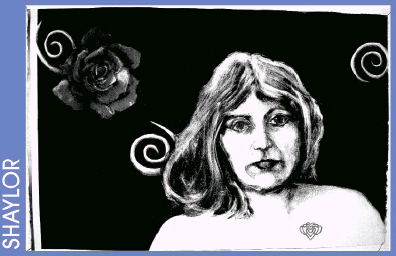APRIL
23
through
MAY 21
2006
|

|

|
With few exceptions the
constructions by insects, birds and animals are made by circular
motions, and they also seem to be part of every child's beginning
drawings. The beauty of nature's spirals was probably observed by man's
earliest ancestors. It is interesting to notice that most natural
spirals are to the right, or sunwise. Many cultures associate
anti-sunwise ('sinister') spirals with dark magic or other negative
energies, although an exception occurs when spirals are paired such as
in animal horns and Ionic capitals.
The spiral as a symbol and as an ornamental device apparently had its
beginning at the dawn of man's intellect. Highly developed spiral
ornaments engraved on mammoth ivory found in the Ukraine area are dated
from 25,000 to 15,000 BCE. Although one-coil spirals are found in the
arts of most peoples of Europe, Asia, Africa, Polynesia and the
Americas, many of the most intricate examples of the spiral ornament
were made by the Celts, who at an early period developed methods of
intertwining several coils. A double spiral is also found in the metal
bronze age work of the Baltic countries. Key patterns are really
spirals formed with straight lines, and the swastika a portion of a
double spiral.
For SPRING we are featuring the work of eleven contemporary Ohio
artists who work in a variety of media, but all of whom frequently
employ the spiral motion in their work. Complementing this are natural
spirals and examples of other artists' spiral works from private
collections. |
|

